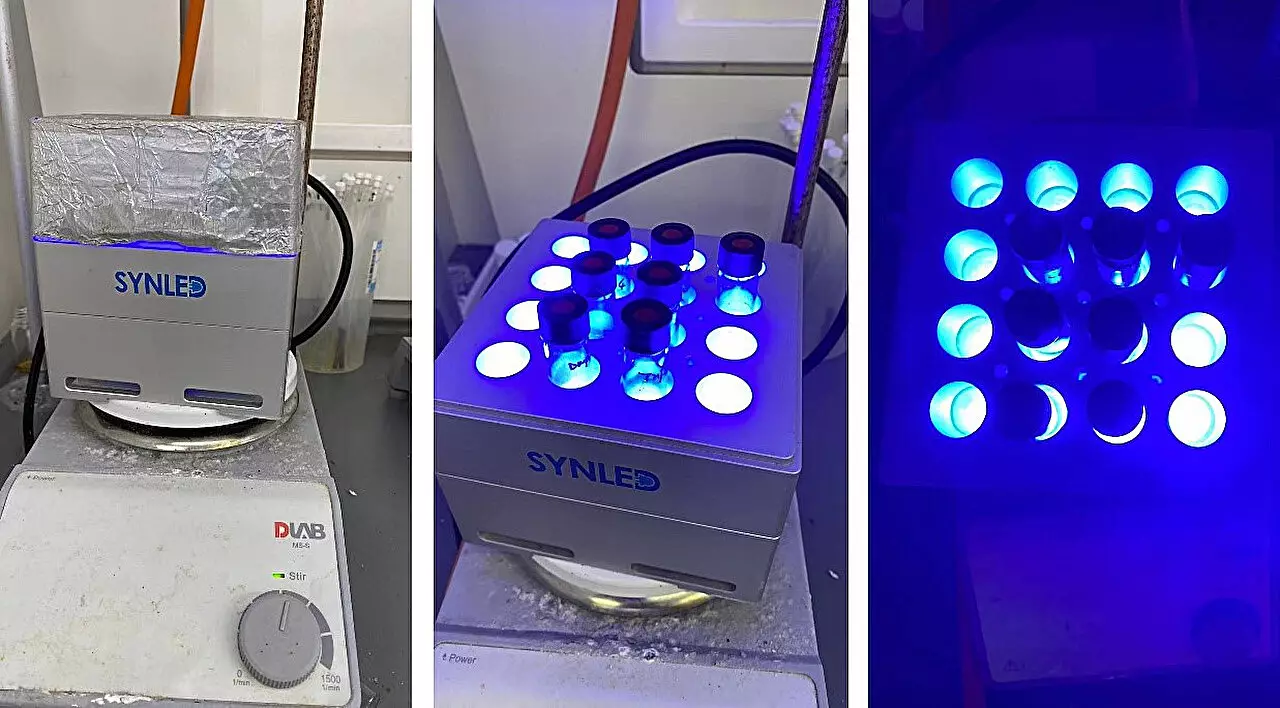In an age where innovation is the cornerstone of progress, researchers from the National University of Singapore (NUS) have unveiled a groundbreaking biomimetic method that could profoundly alter the landscape of carbohydrate chemistry. Under the proficient guidance of Associate Professor Koh Ming Joo, the team achieved a significant milestone: the conversion of naturally occurring sugars into stable glycosides and glycoproteins without sacrificing efficiency through traditional protecting-group chemistry. Published in the highly regarded journal *Nature*, this discovery not only underscores the importance of carbohydrates in biological systems but also hints at exciting possibilities in pharmaceuticals, cosmetic formulations, and biotechnology.
The Challenge of Traditional Glycosylation Methods
The synthesis of carbohydrates and their derivatives has long been characterized by a series of cumbersome and inefficient procedures. Traditional methods often require multi-step protecting-group strategies that generate excessive waste and can be exceedingly toxic. The reactive nature of multiple hydroxyl groups within native sugars adds complexity by complicating selective reactions without the use of protective groups. Researchers like Associate Professor Koh have tirelessly sought a more efficient pathway to chemical glycosylation, yet they often encountered significant hurdles.
This innovative approach is a stark departure from conventional techniques that rely heavily on protecting groups, which not only complicate the synthesis process but also lead to environmental concerns due to increased waste. With the world leaning towards greener chemistry, the urgency for a more sustainable solution has never felt more pressing.
Emulating Nature: The ‘Cap and Glycosylate’ Technology
The innovative method developed by the NUS team takes inspiration from nature itself, specifically the action of enzymes known as glycosyltransferases. These remarkable enzymes facilitate site-selective glycosylation at the anomeric carbon without any need for cumbersome protection of remaining hydroxyl groups. The research team harnessed this natural mechanism by designing a chemical approach that activates and substitutes the anomeric hydroxyl group of native sugars with a nucleophilic thiol.
This ingenious process, referred to as “capping,” results in a transient thioglycoside intermediate. Subsequently, under photoinduced conditions, this intermediate efficiently undergoes stereocontrolled desulfurative cross-coupling with suitable reactants, manifesting an elegant “cap and glycosylate” mechanism. This system allows researchers to convert native sugars into glycosides in a single operational step, circumventing the traditional multistage, waste-heavy methods.
Broad Applicability: Versatile Applications Across Several Domains
One of the most exciting aspects of this technological leap is its broad applicability. The NUS research team showcased the method’s potential by successfully synthesizing a range of densely functionalized glycosyl compounds, namely C-glycosyl, S-glycosyl, Se-glycosyl, and O-glycosyl entities. This versatility extends well beyond small molecules; it can also be applied to complex biomolecules.
In an important advancement, the researchers achieved the C-glycosylation of proteins with varying sizes and structures, significantly lifting the constraints on post-translational chemical glycosylation. This achievement marks an impressive stride towards fully understanding how to modify biological molecules, potentially altering their functionality in previously unimagined ways. “Our aim has always been to embed information within biological molecules to enhance their capabilities,” stated Professor Benjamin G. Davis, affirming the profound impact of this research.
The Future of Glycochemistry
This biomimetic “cap and glycosylate” technology represents a paradigm shift in the field of carbohydrate chemistry. By redefining how we approach glycosylation, the researchers have not only targeted the inefficiencies and environmental burdens associated with traditional methods but also unlocked a pathway to innovative sugar-based therapeutics. “Our findings indicate that the synthesis of glycosides and glycoproteins can be made remarkably more efficient,” assured Assoc. Prof. Koh.
The capacity for this research to empower future studies is immense. As researchers gain access to saccharides in a much more streamlined manner, the probability of exciting breakthroughs in medicine, beauty products, and biotechnology skyrockets. Imagine a world where scientists can easily create customized glycosides that enhance drug efficacy, improve skincare formulations, or even pave the way for novel biotechnological advancements!
The tremendous potential embodied in this new “cap and glycosylate” technology has positioned the researchers at the forefront of glycochemical innovation. With time as an ally and environmental sustainability in mind, the future of carbohydrate chemistry appears not only promising but also essential for the challenges that lie ahead.


Leave a Reply